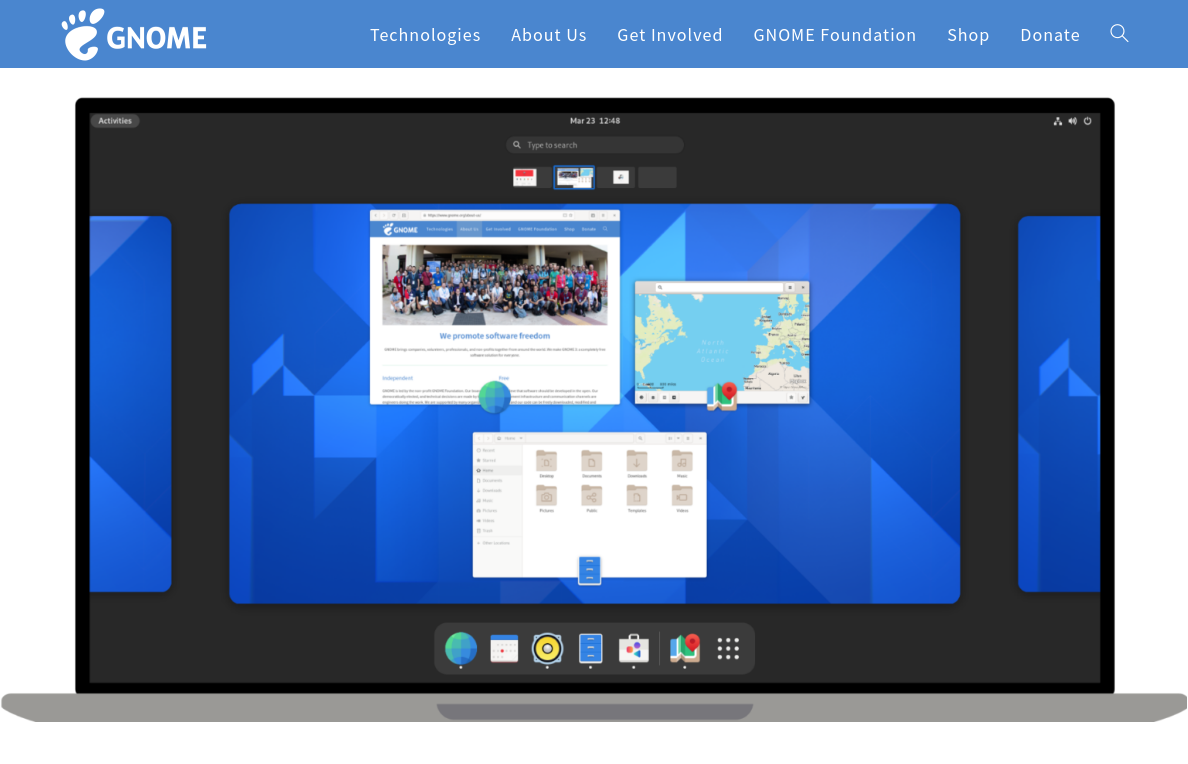Yesterday my work notebook got an upgrade from RHEL (Red Hat Enterprise Linux) 8.3 to 8.4 – normally not a big deal you would assume, but when dealing with internal IBM images, you’ll also download a complete Win10 virtual machine (more than 80% of the 8.8GB download), and while more or less everything is being drawn out of a VPN it all trickles down with about 5 MBit/s maximum speed – takes all day, although my cable network line could have handled 135 MBit/s… oh well…
“Well”, I thought after work, my son Jeremy advised me to try out Arch Linux years ago, and because that’s what they call a “rolling distribution”, it’s always current and comes with the latest and greatest packages, so let’s have a try. And so I installed that into a (kernel-based) KVM machine on my computer, giving it just 4GB of RAM, a 20GB part of my hard disk, and 2 CPUs.
And yes, it is what it says on its homepage – a “simple, lightweight distribution”. I installed the Gnome desktop environment, and so for the first time I saw the upcoming Gnome 40 (only rolling release distros like Arch plus the new Fedora have that one). It even came with the default background(s) from the Gnome guys, so it more or less looked identical to their image:

So if you’re curious how Arch looks, and like me you prefer the Gnome desktop to others, have a look at the Gnome site.
Other than that it’s really pretty minimal, so I see Jeremy’s point – you more or less build (or install) what you need, nothing else, nothing less – the default environment even doesn’t have a printer. So sleek, minimalistic, yes it is. And sexy somehow.
So I tried and installed tools like Firefox, Thunderbird, and Ardour using Arch’s internal ‘pacman’ tool, and yes, all the latest versions including Ardour 6.7 which is only a few days old while I’m typing this. So this is a very easy and convenient way to getting the latest of everything indeed.
Would I need or even recommend it? Well about recommendations: for beginners, no – it’s much easier to recommend a standard Ubuntu or even Linux Mint (based upon Debian/Ubuntu but with more non-free stuff) to beginners than this – this is more for tinkerers who know exactly what they’ll want and/or need, and what not.
For me? Well having the latest and greatest does have its charm, but then there’s also not that much difference to, say, a Debian ‘Sid’ (unstable), and this. Both will give the latest stuff, and both will be managable by users who know their way around Linux, and how to react should things break or not work out immediately (think of greater transitions like from Gnome 2.x to 3.x) – but do I need this in my day-to-day usage of my own machine? I think not. I’m not that much interested in the system(s) per se, but want a reliable and configurable environment on which I can run my photo and music apps, handle mail and basic web browsing, all that day-to-day stuff. It’s not that sexy if you first have to deal with and fix your latest updates/upgrades rather than beginning whatever you wanted to do right away. So for me, a current Debian stable is just the way to go. Or, if you want something more recent, take Ubuntu (although the upcoming Debian 11 ‘Bullseye’ will be newer than the 20.04 LTS of Ubuntu of course), or any of its derivates (a friend from Paris takes ElementaryOS, a strikingly beautiful descendant of Ubuntu which looks a bit like MacOS).
To each their own as they say. Anyway, very cool and interesting to look over the proverbial fence, and to try out Arch. Somehow I still love its simplicity, and the idea behind it. So, if you want to see it, try it – recommended indeed. At least you’d never have to install a new version anymore… 🙂
Philosophically, Arch is a bit more lax compared to Debian concerning the ‘free’ (in free and open source), but both are more or less the opposite of ‘Enterprise’, which I like a lot. Both Arch and Debian are even a lot less commercial than Ubuntu, and unlike that (which is built by the staff from Canonical) they’re not companies, so they can’t be bought, sold, and ruined in any way, and I love just that. It’s a thing called ‘freedom’, and that has values far beyond monetary ones. Think about it.
As always, thanks for reading.
P.S.: While I’ve been at it, I could of course also have had a look at KDE Plasma – but ok, there are more rainy days to come, so… 😉
